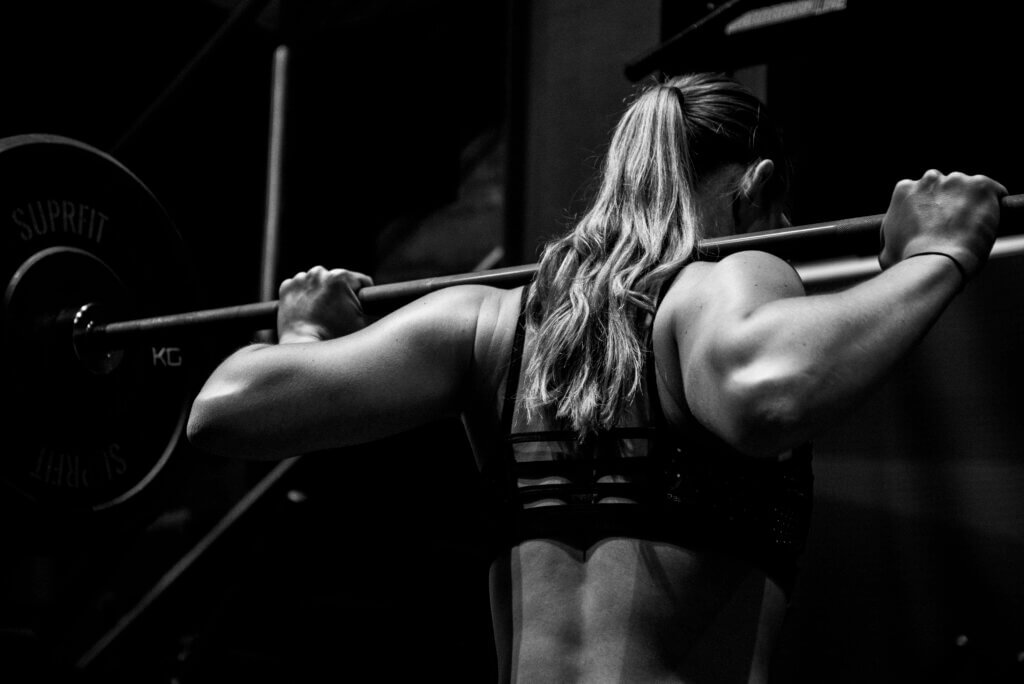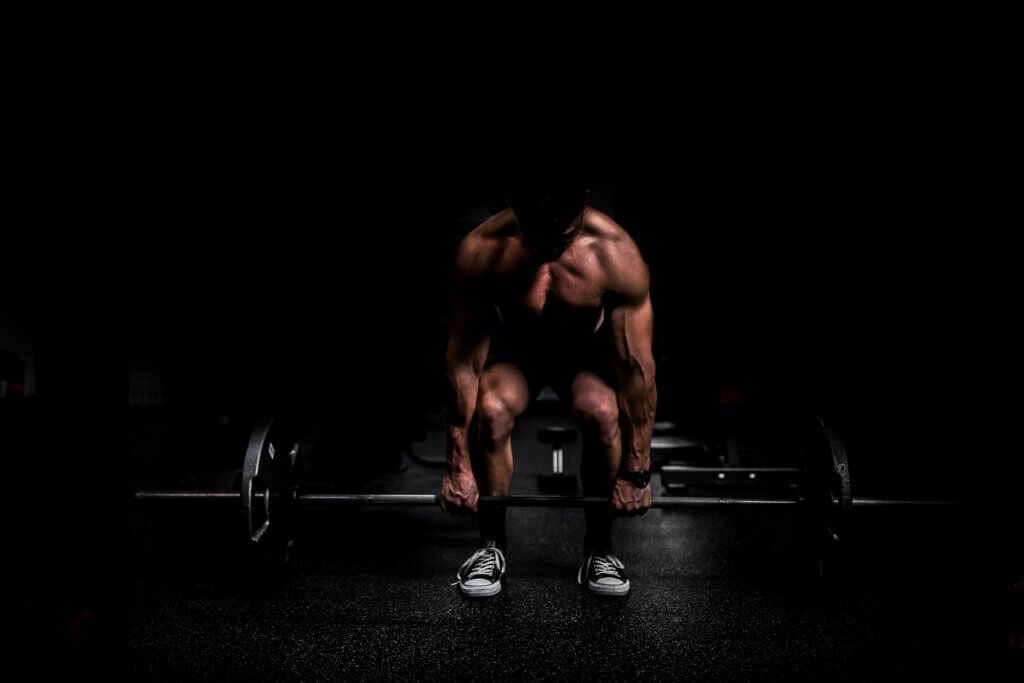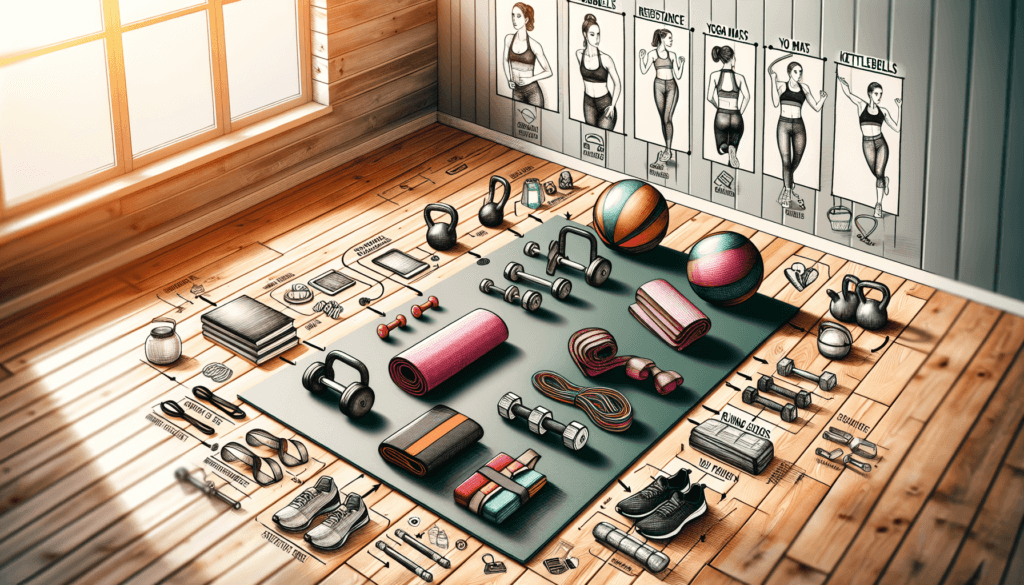Are you looking to take your workout routine to the next level? Choosing the right workout accessories can make all the difference in how effective and enjoyable your workouts are. From gym shoes to gloves to resistance bands, the options can be overwhelming. But fear not! In this ultimate guide, we will walk you through the key factors to consider when selecting workout accessories, helping you make informed decisions that will enhance your fitness journey. So get ready to discover the essential tools that will take your workouts to new heights!

Fitness Tracker
A fitness tracker is a must-have accessory for anyone looking to keep track of their health and fitness goals. When choosing a fitness tracker, there are several features to look for that will ensure you are getting the most out of your device.
Features to Look For
When selecting a fitness tracker, it is important to consider the features that are most important to you. Some common features to look for include heart rate monitoring, step counting, sleep tracking, and GPS functionality. Heart rate monitoring is especially crucial for those who want to track their cardiovascular health during workouts. Step counting is great for monitoring your daily activity levels and setting goals. Sleep tracking can provide valuable insights into your sleep patterns and help you make adjustments to improve your overall sleep quality. GPS functionality is essential for those who love outdoor activities such as running or cycling, as it allows you to track your routes and distances.
Compatibility with Smartphone
In today’s digital age, it is important to choose a fitness tracker that is compatible with your smartphone. Most fitness trackers sync with a corresponding app on your smartphone, allowing you to easily track and analyze your data. Make sure to check if the fitness tracker you are interested in is compatible with your specific smartphone operating system, whether it be iOS or Android. Compatibility ensures that you can seamlessly integrate your fitness tracker into your daily routine and effortlessly access your data on the go.
Design and Comfort
When it comes to wearing a fitness tracker, comfort and design play a significant role. Look for a fitness tracker that is lightweight and comfortable to wear for extended periods. The material of the band should be durable and breathable to prevent irritation, and the clasp or closure should be secure to minimize the risk of it falling off during workouts. Additionally, consider the design and aesthetics of the fitness tracker. Choose a style that appeals to your personal taste and matches your everyday wardrobe. After all, you’ll be wearing this accessory daily, so it’s important that you feel confident and comfortable while doing so.
Wireless Headphones
Wireless headphones have become an essential accessory for many fitness enthusiasts, providing the freedom to move without the hassle of tangled wires. When selecting wireless headphones, there are a few key factors to consider to ensure you find a pair that suits your needs.
Sound Quality
One of the most critical features to consider when choosing wireless headphones is sound quality. Look for headphones that offer crisp, clear sound with balanced bass and treble. If you enjoy listening to music while working out, you want headphones that can deliver high-quality audio that enhances your exercise experience. Some headphones even offer noise-canceling capabilities, which can be beneficial in a noisy gym environment.
Battery Life
Another essential factor to consider when choosing wireless headphones is battery life. You want a pair that can last throughout your workout without running out of charge. Look for headphones with a long battery life, ideally lasting for at least 8 hours or more on a full charge. Additionally, check if the headphones come with a charging case or dock, as this can extend the battery life even further and make it more convenient to recharge them.
Fit and Comfort
Since you’ll be wearing your wireless headphones during physical activities, it’s crucial to choose a pair that provides a secure and comfortable fit. Look for headphones that come with different ear tip sizes or adjustable headbands to ensure a snug fit. Additionally, consider if the headphones are sweat-resistant or waterproof, as this will protect them from moisture and prolong their lifespan. Comfort is key when it comes to workouts, so opt for headphones that won’t cause discomfort or irritation during prolonged use.
Water Bottle
Staying hydrated during your workouts is vital for maintaining optimal performance and preventing dehydration. When selecting a water bottle, there are a few factors to consider to ensure you choose the right one for your needs.
Material
The material of the water bottle is an important consideration for both durability and safety. Common materials for water bottles include plastic, stainless steel, and glass. Plastic bottles are lightweight and often more affordable, but they may not be as durable or eco-friendly. Stainless steel bottles are durable, keep beverages cold for longer periods, and are often BPA-free. Glass bottles offer a clean taste and are free from any potential chemical leaching. Consider your priorities and choose a material that aligns with your preferences.
Capacity
The capacity of the water bottle is another crucial factor to consider. Think about how much water you typically consume during your workouts or throughout the day. If you tend to have longer workout sessions or prefer consuming larger amounts of water, opt for a bottle with a higher capacity, such as 32 or 40 ounces. On the other hand, if you prefer smaller sips or have shorter workouts, a bottle with a capacity of 16 to 20 ounces may be sufficient. Consider your hydration needs and choose a capacity that suits your lifestyle.
Ease of Use
Lastly, consider the ease of use when selecting a water bottle. Look for features such as a wide-mouth opening, which makes it easier to fill and clean the bottle. Additionally, consider if the bottle has a flip-top or straw for easy access to the water while on the move. Look for bottles that are leak-proof and have a secure cap or lid to prevent any spills or accidents. The ease of use will ensure that you stay hydrated without any hassle or inconvenience during your workouts.
Dumbbells
Dumbbells are versatile exercise equipment that can help you build strength and tone your muscles. When choosing dumbbells, consider the following factors to find the perfect pair for your workout routine.
Weight Range
The weight range of the dumbbells is one of the most important considerations. You want to choose a pair that offers a range of weights suitable for your current fitness level and future progression. Look for adjustable dumbbells that allow you to increase or decrease the weight as needed. This versatility ensures that you can easily customize your workouts and challenge yourself as you progress. Fixed-weight dumbbells come in different weight options, so choose a set that includes weights appropriate for your desired exercises.
Material and Grip
The material and grip of the dumbbells play a significant role in safety and comfort. Common materials include rubber-coated, vinyl-coated, or cast iron dumbbells. Rubber-coated or vinyl-coated dumbbells provide a protective layer that prevents damage to the floor and reduces noise. Cast iron dumbbells are more durable but may require extra care to prevent rusting. Additionally, consider the grip of the dumbbells. Look for dumbbells with a textured or rubberized grip that offers a secure hold, even when you start to sweat during intense workouts.
Storage
Consider how you plan to store your dumbbells when not in use. If you have limited space in your home gym or workout area, adjustable dumbbells with a compact design are a great option. They allow you to switch between different weight options without taking up too much space. If you have more room, a dumbbell rack or stand can keep your fixed-weight dumbbells organized and easily accessible. Proper storage not only keeps your dumbbells from cluttering your space but also helps extend their lifespan by preventing any accidental damage.

Yoga Mat
A yoga mat is a workout accessory that provides comfort, support, and traction during various forms of exercise, including yoga, Pilates, and floor exercises. When selecting a yoga mat, consider the following factors to find the perfect one for your needs.
Thickness and Comfort
One of the primary considerations when choosing a yoga mat is its thickness. Thicker mats provide more cushioning and extra support for your joints, especially during longer yoga sessions or exercises that require you to spend more time on the floor. Thinner mats are more portable and suitable for exercises that require strong stability, such as balance poses. Consider your comfort needs and the types of exercises you’ll be doing to determine the ideal thickness for your yoga mat.
Material and Durability
The material of the yoga mat is another essential factor to consider. Common materials include PVC, natural rubber, and TPE (Thermoplastic Elastomer). PVC mats are affordable and provide good grip, but they may not be as eco-friendly or durable as other options. Natural rubber mats are eco-friendly, offer excellent grip, and have good durability. TPE mats are a newer, eco-friendly option that provides excellent grip and cushioning. Consider your preferences, environmental concerns, and whether you have any allergies when choosing the material for your yoga mat.
Size and Portability
Consider the size and portability of the yoga mat, especially if you plan to practice outside of your home. Standard yoga mats are typically around 68 inches long and 24 inches wide, but you can find longer and wider options for taller individuals or those who prefer extra space. Consider how you plan to transport your mat, whether it be to the gym, a park, or a yoga class. Look for mats that are lightweight and come with carrying straps or bags for easy portability. A travel-friendly yoga mat allows you to maintain your practice wherever you go.
Gym Bag
A gym bag is an essential accessory for anyone who frequents the gym or likes to stay active on the go. When selecting a gym bag, consider the following factors to find one that suits your needs.
Size and Capacity
The size and capacity of the gym bag are important considerations, as you want a bag that can comfortably hold all your workout essentials. Consider the size of your workout gear, including your shoes, towels, and change of clothes. Look for a bag that offers multiple compartments and pockets for efficient organization. Additionally, think about how you plan to transport your gym bag. If you’ll be carrying it on your back or biking to the gym, opt for a more compact and lightweight option. If you’ll be driving or using public transportation, a larger bag with more storage space may be preferable.
Organization and Compartments
Efficient organization is essential for a gym bag, as it allows you to easily find and access your belongings. Look for a bag that offers separate compartments for shoes, wet clothes, and water bottles. Interior and exterior pockets are also useful for storing smaller items, such as keys, headphones, and toiletries. Some gym bags even come with dedicated compartments for laptops or yoga mats. Proper organization prevents your items from getting lost or damaged and saves you time when you’re in a rush to get to your workout or class.
Durability and Waterproofing
Durability is key when it comes to a gym bag, as it needs to withstand frequent use and potentially rough handling. Look for bags made from high-quality materials, such as nylon or polyester, that are known for their durability. Additionally, consider if the bag is waterproof or water-resistant. This feature protects your belongings from any accidental spills or exposure to rain, ensuring that your valuables, such as electronics or important documents, remain safe and dry. A durable and waterproof gym bag will last you a long time, providing reliable storage for all your workout essentials.

Resistance Bands
Resistance bands are versatile tools that can effectively target and strengthen various muscle groups. When selecting resistance bands, consider the following factors to find the right ones for your workout routine.
Resistance Level
Resistance bands come in different levels of resistance, ranging from light to heavy. Choose bands that offer a variety of resistance levels, as this allows you to adjust the intensity of your exercises and progress over time. Beginners may want to start with lighter resistance bands and gradually work their way up, while more advanced users may prefer heavy resistance bands to challenge their strength. Having a range of resistance options ensures that you can tailor your workouts and target different muscle groups effectively.
Length and Width
The length and width of resistance bands are important considerations, as they determine the versatility and effectiveness of the exercises you can perform. Longer bands allow for a wider range of motion and enable you to perform exercises such as rows or bicep curls with more resistance. Shorter bands are better for exercises that require less length, such as lateral raises or glute bridges. Additionally, consider the width of the bands. Wider bands offer more resistance and stability, making them ideal for compound exercises or exercises that require greater stability, such as squats or deadlifts.
Quality and Durability
Choose resistance bands made from high-quality materials that can withstand frequent use and stretching without losing their elasticity. Look for bands that are made from natural latex or high-quality synthetic materials to ensure long-lasting durability. Poor-quality bands may snap or lose their resistance over time, making them less effective and potentially dangerous during workouts. Opting for bands from reputable brands ensures that you’ll be investing in a reliable and durable workout accessory that will stand the test of time.
Foam Roller
A foam roller is a valuable accessory for self-myofascial release, helping to relieve muscle tension and improve flexibility. When selecting a foam roller, consider the following factors to find the right one for your needs.
Density and Firmness
The density and firmness of the foam roller determine how deep the massage or release can be. Soft foam rollers provide a gentler massage, making them suitable for beginners or those with sensitive areas. Firm foam rollers offer a deeper massage, targeting tight knots and trigger points more effectively. If you’re experienced with foam rolling or prefer a more intense massage, a firm roller may be more beneficial. However, it’s important to listen to your body and choose a density and firmness that suits your comfort level and goals.
Size and Shape
Consider the size and shape of the foam roller, as this can affect its versatility and the areas it can target. Longer foam rollers allow for a broader range of exercises and can effectively target larger muscle groups, such as the back or legs. Smaller foam rollers are more suitable for more targeted or precise work, such as releasing tension in specific areas like the neck or forearms. Additionally, some foam rollers come in unique shapes or have textured surfaces, which can provide added benefits, such as increased circulation or improved grip.
Texture and Grip
The texture of the foam roller plays a role in its effectiveness and comfort during use. Smooth foam rollers provide a consistent pressure, while textured rollers with bumps or ridges can offer a deeper massage and target specific areas more effectively. Consider your preferences and any specific areas of concern when choosing the texture of your foam roller. Additionally, look for a foam roller with a non-slip surface or grip to ensure stability and safety during use. A good grip prevents any accidental slips or injuries and allows you to fully focus on your self-myofascial release routine.

Gym Gloves
Gym gloves are an accessory that provide protection and support for your hands during weightlifting and other gym activities. When selecting gym gloves, consider the following factors to find a pair that suits your needs.
Material and Breathability
Choose gym gloves made from breathable materials, such as mesh or synthetic fabrics, to prevent excessive sweating and discomfort during workouts. Look for gloves with good ventilation to allow air to flow and keep your hands cool. Additionally, consider if the gloves are made from durable materials that can withstand regular use and potential friction with equipment. Leather or synthetic leather palms provide a good grip and are known for their durability, while softer materials offer more flexibility and comfort.
Fit and Comfort
The fit and comfort of gym gloves are crucial for maximizing performance and minimizing discomfort. Look for gloves that come in different sizes or offer adjustable straps to ensure a snug fit. Gloves that are too tight can restrict movement and cause discomfort, while gloves that are too loose can reduce grip strength and compromise safety. Additionally, consider if the gloves have padded areas or gel inserts to provide extra cushioning and reduce the risk of blisters or calluses. Choose gloves that feel comfortable on your hands and allow you to perform your exercises with ease.
Protection and Padding
The primary purpose of gym gloves is to protect your hands from potential injuries and provide added support during exercises. Look for gloves that offer adequate padding in the palm area to cushion your hands and protect against pressure or impact during weightlifting or other exercises. Gloves with reinforced fingertips or full finger coverage can provide additional protection for those who prefer more coverage. Additionally, consider if the gloves have wrist straps or wraps to provide extra support and stability during heavy lifts or exercises that put stress on the wrists. Proper protection and padding ensure that you can perform your workouts safely and comfortably.
Skipping Rope
A skipping rope, also known as a jump rope, is a simple yet effective workout accessory that can provide a cardiovascular workout and improve coordination. When selecting a skipping rope, consider the following factors to find the right one for your needs.
Material and Durability
Choose a skipping rope made from durable materials that can withstand repeated use and the impact of hitting the floor. Common materials for skipping ropes include nylon, PVC, or steel cables. Nylon ropes are lightweight, flexible, and durable, making them a great option for speed and endurance workouts. PVC ropes are more affordable and suitable for beginners or those who prefer more rhythmic or freestyle skipping. Steel cable ropes are heavier and better suited for advanced jumpers or those who want a more intense workout. Consider your skill level and workout goals when choosing the material and durability of your skipping rope.
Handle Grip
The handle grip of the skipping rope is an important consideration, as it affects your comfort and grip during skipping. Look for handles that provide a secure and non-slip grip, even when your hands start to sweat. Foam or rubberized handles offer a comfortable grip and help absorb any impact during high-intensity workouts. Additionally, consider if the handles have ball bearings or swivels, as this allows for smoother and more efficient rotation. A comfortable and secure handle grip ensures that you can skip for longer periods without discomfort or fatigue.
Adjustable Length
One of the most important features to consider when selecting a skipping rope is whether it is adjustable in length. Adjustable skipping ropes allow you to customize the length to suit your height and skipping style. Ideally, the skipping rope should be adjusted so that the handles reach approximately chest height when you’re standing on the middle of the rope. This ensures that the rope clears the ground comfortably and helps prevent tripping or tangling. Adjustable length ropes are suitable for individuals of different heights and provide flexibility as your skipping technique evolves.
In conclusion, choosing the right workout accessories is crucial for enhancing your exercise experience, maximizing performance, and achieving your fitness goals. Whether it’s a fitness tracker to monitor your progress, wireless headphones to provide motivational music, or resistance bands to target specific muscle groups, each accessory plays a unique role in supporting your fitness journey. Consider the features, compatibility, design, and comfort of each product to ensure that it aligns with your needs, preferences, and lifestyle. By investing in the right workout accessories, you can elevate your workouts, stay motivated, and make the most out of your fitness routine.



